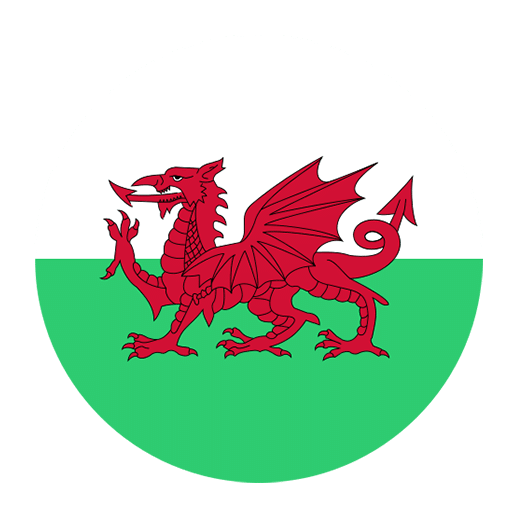Learning a new language is always an exciting journey, and Welsh, with its rich history and unique characteristics, is no exception. As you embark on this journey, understanding the sentence structure of Welsh is crucial to your success. This article aims to provide a comprehensive guide to Welsh sentence structure, giving you the tools you need to build sentences confidently and correctly.
Basic Word Order
In Welsh, the basic word order differs significantly from English. While English typically follows a Subject-Verb-Object (SVO) order, Welsh generally follows a Verb-Subject-Object (VSO) order. This can be one of the more challenging aspects for English speakers to grasp initially.
For example, in English, you might say:
“I (subject) read (verb) a book (object).”
In Welsh, this would be structured as:
“Darllenais i lyfr.”
Here, “Darllenais” means “read,” “i” means “I,” and “lyfr” means “book.” As you can see, the verb “darllenais” comes first, followed by the subject “i,” and finally the object “lyfr.”
The Verb-Subject-Object (VSO) Structure
Understanding the VSO structure is fundamental to mastering Welsh sentence construction. Let’s break it down further:
1. **Verb (Gweithredydd):** The verb always comes first in affirmative sentences. This is a defining feature of the Welsh language.
2. **Subject (Pwnc):** The subject follows the verb. The subject can be a pronoun (e.g., “i” for “I,” “ti” for “you”) or a noun.
3. **Object (Gwrthrych):** The object, if there is one, comes after the subject.
Let’s look at another example:
“He sings a song.”
In Welsh:
“Canodd e gân.”
Here, “canodd” (sings) is the verb, “e” (he) is the subject, and “gân” (song) is the object.
Negative Sentences
Forming negative sentences in Welsh involves the use of specific negative particles. The most common negative particle is “ddim,” which is placed after the verb.
For example:
“I do not read a book.”
In Welsh:
“Dydw i ddim yn darllen llyfr.”
Here, “dydw” is the negative form of “I am,” “i” is “I,” “ddim” is the negative particle, “yn” is a linking particle, and “darllen” is “read.” The object “llyfr” (book) follows.
It’s essential to note that the verb form changes in negative sentences. For instance:
“He does not sing a song.”
In Welsh:
“Dydy e ddim yn canu cân.”
Here, “dydy” is the negative form of “he is.”
Questions
Forming questions in Welsh involves changing the verb form and often moving the verb to the beginning of the sentence, similar to the affirmative structure.
For example:
“Do you read a book?”
In Welsh:
“Ydych chi’n darllen llyfr?”
Here, “ydych” is the interrogative form of “you are,” “chi” is “you,” “yn” is a linking particle, and “darllen” is “read.” The object “llyfr” (book) comes at the end.
Another example:
“Is he singing a song?”
In Welsh:
“Ydy e’n canu cân?”
“Ydy” is the interrogative form of “he is,” “e” is “he,” “yn” is a linking particle, “canu” is “singing,” and “cân” is “song.”
Mutations
One unique aspect of Welsh that greatly affects sentence structure is the concept of mutations. Welsh has three main types of initial consonant mutations: soft, nasal, and aspirate. These mutations can change the initial consonant of a word depending on grammatical context.
For example:
– Soft mutation: “cath” (cat) becomes “gath” after the word “y” (the).
– Nasal mutation: “cath” becomes “nghath” after the preposition “fy” (my).
– Aspirate mutation: “cath” becomes “chath” after the word “ei” (his).
Understanding when and how to apply these mutations is crucial for proper sentence construction.
Auxiliary Verbs and Periphrasis
Welsh frequently uses auxiliary verbs to express different tenses and aspects. The most common auxiliary verb is “bod” (to be), which is used to form continuous and perfect tenses.
For example, to express the present continuous:
“I am reading a book.”
In Welsh:
“Rydw i’n darllen llyfr.”
Here, “rydw” is the present tense of “to be,” “i” is “I,” “yn” is a linking particle, and “darllen” is “reading.” The object “llyfr” (book) follows.
For the perfect tense:
“I have read a book.”
In Welsh:
“Rydw i wedi darllen llyfr.”
Here, “rydw” is the present tense of “to be,” “i” is “I,” “wedi” is “have,” and “darllen” is “read.” The object “llyfr” (book) follows.
Relative Clauses
Relative clauses in Welsh often use the particle “a” (who, which, that). The relative clause follows the noun it describes.
For example:
“The book that I am reading.”
In Welsh:
“Y llyfr a rydw i’n ei ddarllen.”
Here, “y llyfr” is “the book,” “a” is “that,” “rydw” is “I am,” “i” is “I,” “yn” is a linking particle, “ei” is a possessive particle, and “darllen” is “reading.”
Adjectives
In Welsh, adjectives typically follow the noun they describe, which is the opposite of English.
For example:
“A big house.”
In Welsh:
“Tŷ mawr.”
Here, “tŷ” is “house,” and “mawr” is “big.”
When using adjectives in sentences, they follow the noun:
“The big house.”
In Welsh:
“Y tŷ mawr.”
Here, “y” is “the,” “tŷ” is “house,” and “mawr” is “big.”
Possessive Constructions
Possessive constructions in Welsh use possessive pronouns and particles. The possessive pronoun often causes a mutation in the following noun.
For example:
“My car.”
In Welsh:
“Fy nghar.”
Here, “fy” is “my,” and “car” is “car,” with a nasal mutation changing “car” to “nghar.”
Another example:
“His book.”
In Welsh:
“Ei lyfr.”
Here, “ei” is “his,” and “lyfr” is “book,” with a soft mutation changing “llyfr” to “lyfr.”
Prepositions
Prepositions in Welsh can cause mutations in the following noun. Some common prepositions include “ar” (on), “i” (to), “â” (with), and “o” (from).
For example:
“On the table.”
In Welsh:
“Ar y bwrdd.”
Here, “ar” is “on,” “y” is “the,” and “bwrdd” is “table.”
Another example:
“With a pen.”
In Welsh:
“â phin.”
Here, “â” is “with,” and “pin” is “pen,” with an aspirate mutation changing “pin” to “phin.”
Complex Sentences
Forming complex sentences in Welsh involves combining multiple clauses using conjunctions such as “a” (and), “ond” (but), “neu” (or), and “oherwydd” (because).
For example:
“I read a book and he sings a song.”
In Welsh:
“Darllenais i lyfr ac mae e’n canu cân.”
Here, “darllenais” is “read,” “i” is “I,” “lyfr” is “book,” “ac” is “and,” “mae” is “he is,” “e” is “he,” “yn” is a linking particle, “canu” is “singing,” and “cân” is “song.”
Another example:
“She does not write because she is tired.”
In Welsh:
“Nid yw hi’n ysgrifennu oherwydd mae hi’n flinedig.”
Here, “nid yw” is the negative form of “she is,” “hi” is “she,” “yn” is a linking particle, “ysgrifennu” is “writing,” “oherwydd” is “because,” “mae” is “she is,” “hi” is “she,” “yn” is a linking particle, and “flinedig” is “tired.”
Practice and Immersion
Understanding Welsh sentence structure is just the first step. To truly master it, practice and immersion are key. Here are some tips to help you on your journey:
1. **Practice Regularly:** Consistent practice is essential. Try to construct sentences daily, using the VSO structure and incorporating different tenses, mutations, and vocabulary.
2. **Immerse Yourself:** Surround yourself with the Welsh language. Listen to Welsh music, watch Welsh TV shows, and read Welsh books. Immersion helps you internalize the sentence structures and develop a natural feel for the language.
3. **Use Language Apps:** There are various language learning apps designed to help you practice Welsh. These apps often include exercises focused on sentence construction and grammar.
4. **Join a Community:** Engage with other Welsh learners and speakers. Join online forums, attend language meet-ups, and participate in language exchange programs.
5. **Seek Feedback:** Don’t be afraid to make mistakes. Use them as learning opportunities. Seek feedback from native speakers or language instructors to refine your understanding and usage of Welsh sentence structure.
Conclusion
Understanding Welsh sentence structure is a fundamental aspect of mastering the language. While the VSO order and the concept of mutations may seem challenging at first, with regular practice and immersion, you’ll find yourself becoming more comfortable and confident in constructing Welsh sentences.
Remember, language learning is a journey. Embrace the process, celebrate your progress, and keep pushing forward. With dedication and effort, you’ll soon find yourself speaking and writing Welsh with ease. Happy learning!

